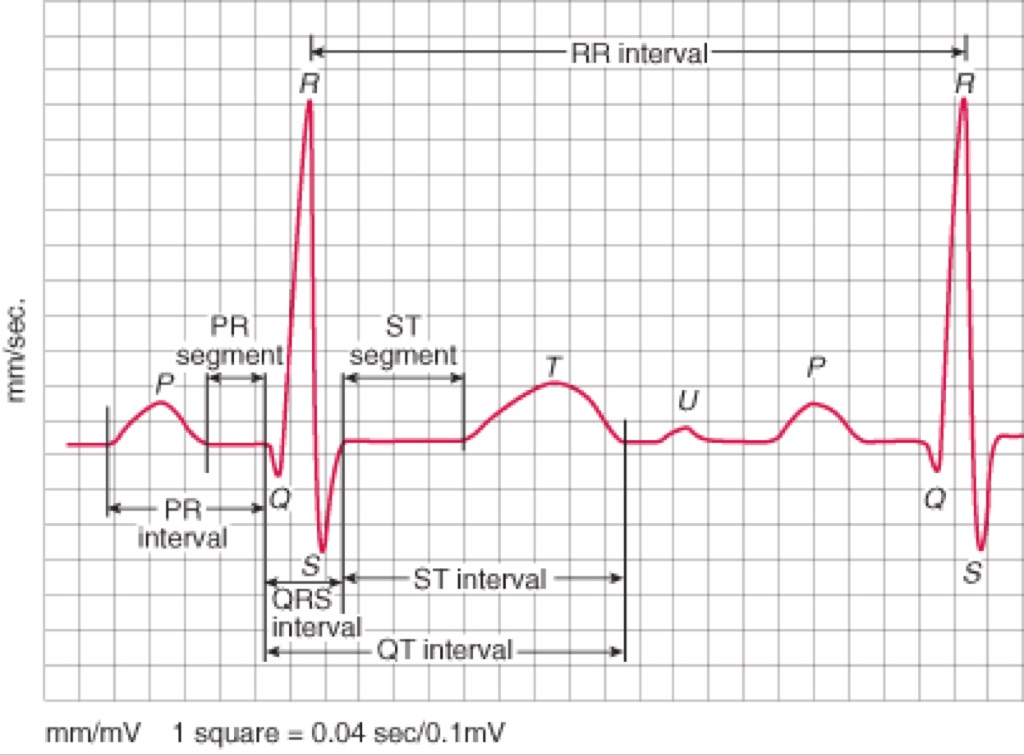Difference between revisions of "CARDIAC ELECTRICAL ACTIVITY-INTERVALS"
(Imported from text file) |
(Imported from text file) |
||
| Line 14: | Line 14: | ||
==Reference(s)== | ==Reference(s)== | ||
Barrett, K.E., Barman, S.M | Barrett, K.E., Barman, S.M., Brooks, H.L., X, J. and Ganong, W.F. (2019). Ganong’s review of medical physiology. 26th ed. New York: Mcgraw-Hill Education | ||
[[Category:Cardiac Electrical Activity]] | [[Category:Cardiac Electrical Activity]] | ||
[[Category:Physiology]] | [[Category:Physiology]] | ||
Latest revision as of 02:30, 21 March 2023
SUMMARY
1. PR interval: defined from beginning of P wave to the beginning of the QRS complex. Corresponds to the time taken for the impulse to travel from the SA node to the ventricles. Normal: 0.12-0.20 sec.
2. QRS complex: represents ventricular depolarization. Upper limit: 0.12 sec.
3. QT interval: defined from the start of the QRS complex to the end of the T wave. Represents the time from the onset of ventricular depolarization to full repolarization. HR dependent.
4. QTc interval: QT interval that has been corrected for variations in HR (standardised to 60 beats/min) & and permits comparison between and within individuals. Normal: 0.35-0.43 sec.

Image: Dr. Appukutty Manickam.
Reference(s)
Barrett, K.E., Barman, S.M., Brooks, H.L., X, J. and Ganong, W.F. (2019). Ganong’s review of medical physiology. 26th ed. New York: Mcgraw-Hill Education